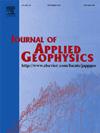Numerical simulation of GPR via Leapfrog ADI-FDTD
IF 2.2
3区 地球科学
Q2 GEOSCIENCES, MULTIDISCIPLINARY
引用次数: 0
Abstract
Numerical simulation of Ground-penetrating radar (GPR) is the basis for interpretating and inverting geological information from real GPR measured data. However, the current matured finite difference time domain (FDTD) numerical simulation technique has drawbacks such as strict time step limitation due to Courant Friedrich Lewy (CFL) condition and long computation time. As an improve method of FDTD, the alternating direction implicit FDTD (ADI-FDTD) numerical simulation technique, although stable and not limited by CFL condition, occupies a large amount of memory and has low computational efficiency. Therefore, we developed a GPR numerical simulation method based on the Leapfrog ADI-FDTD technique. The calculation results of this method are unconditionally stable, and its time step is not limited by CFL condition. In addition, in response to address the problem of slow numerical simulation speed cause by traditional sequential simulation, we also introduced Open multi-processing (OpenMP) technology to improve the serial simulation of sequential calculation into parallel simulation of multi-channel simultaneous computation in shared memory, further improving the computational efficiency of GPR numerical simulation. The numerical simulation results of homogeneous model, high contrast boundary model, three-layer geological model and slightly more complex geological model show that the proposed method effectively combines the advantages of Leapfrog ADI-FDTD and OpenMP parallel computing to achieve GPR numerical simulation quickly.
基于跳越式ADI-FDTD的探地雷达数值模拟
探地雷达数值模拟是利用探地雷达实测资料解释和反演地质信息的基础。然而,目前成熟的时域有限差分(FDTD)数值模拟技术由于CFL (Courant Friedrich Lewy)条件的限制,存在时间步长限制严格、计算时间长等缺点。交替方向隐式时域有限差分(ADI-FDTD)数值模拟技术作为时域有限差分的一种改进方法,虽然稳定且不受CFL条件的限制,但占用内存大,计算效率低。因此,我们开发了一种基于跳越式ADI-FDTD技术的探地雷达数值模拟方法。该方法的计算结果无条件稳定,且时间步长不受CFL条件的限制。此外,针对传统顺序仿真导致的数值仿真速度慢的问题,我们还引入了OpenMP技术,将顺序计算的串行仿真改进为共享内存中多通道同时计算的并行仿真,进一步提高了探地雷达数值仿真的计算效率。均匀模型、高对比度边界模型、三层地质模型和稍复杂地质模型的数值模拟结果表明,该方法有效地结合了Leapfrog ADI-FDTD和OpenMP并行计算的优点,可快速实现探地雷达数值模拟。
本文章由计算机程序翻译,如有差异,请以英文原文为准。
求助全文
约1分钟内获得全文
求助全文
来源期刊

Journal of Applied Geophysics
地学-地球科学综合
CiteScore
3.60
自引率
10.00%
发文量
274
审稿时长
4 months
期刊介绍:
The Journal of Applied Geophysics with its key objective of responding to pertinent and timely needs, places particular emphasis on methodological developments and innovative applications of geophysical techniques for addressing environmental, engineering, and hydrological problems. Related topical research in exploration geophysics and in soil and rock physics is also covered by the Journal of Applied Geophysics.
 求助内容:
求助内容: 应助结果提醒方式:
应助结果提醒方式:


